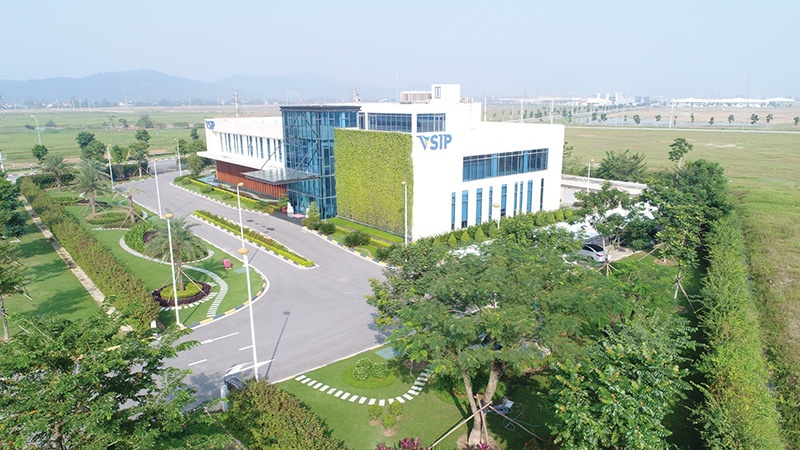Developing sustainably with rise of green buildings
 |
| By Le Luong Vang - Managing director ISD Engineering |
In 1993, the world’s first Green Building Council was established in the US and the LEED Green building certificate was also issued accordingly.
In 1999, the World Green Building Council was established in California, setting off the green building revolution around the world.
In Southeast Asia, in 2005, Singapore’s Ministry of Construction issued a mandatory Green Mark Certificate for all new construction and renovation works in this country.
Following this trend, the Vietnam Green Building Council (VGBC) was established in 2007 and launched the LOTUS green building assessment system adjusted to projects in Vietnam.
In 2015, the International Finance Corporation (IFC), a member of the World Bank Group, launched the EDGE green building certificate to provide a comprehensive technical and economical solution for developing countries to encourage the development of resource-efficient buildings.
Vietnam is one of the countries directly affected by climate change and, therefore, must be part of this revolution. By the second quarter of 2021, there were 104 LEED-certified, 34 LOTUS-certified, and 50 EDGE-certified projects in the country.
Back in 2010 when the Colgate-Palmolive factory – the first green building and the first LEED-certified project in Vietnam – was constructed, the team had difficulties in finding paint and glue materials with low enough volatile organic compound (VOC) content to protect users’ health.
At that time, low-VOC interior paints and glue were new to Vietnam and green building projects had to import them. However, after many years of development, low-VOC paint and glue products are now in the portfolio of most domestic manufacturers.
The same goes for other construction products. As the solar reflectance index (SRI) was previously only available at Bluescope, it is now produced by many different manufacturers such as Dong A Steel and Metal and Hoa Sen Group, at competitive prices.
Low-E glass also used to be imported at a very high price, but is now produced in Vietnam. Moreover, Viglacera, one of the leading construction material producers, has created Solar Control glass with similar features to Low-E glass but at a more affordable price.
 |
| Green building policy and development has come a long way and is now increasingly prioritised in Vietnam |
The development of green buildings has promoted the creation of a new market where solutions to protect human health and minimise the impact on the environment are no longer too expensive. Investment costs for the design and construction of green buildings are almost no different from regular works – while much-reduced operating and maintenance costs will increase the economic benefits of the buildings.
More specifically, FM Logistic Group has built its entire global logistics warehouse chain following green building standards, which helped reduce its energy consumption by 17 per cent.
This group’s first logistics warehouse in Vietnam also achieved LEED Gold certification and cut energy consumption by more than 25 per cent.
According to a study by the IFC and Georgetown University in 2018, 21 per cent of electricity and 28 per cent of water can be saved at apartment projects in Vietnam by applying green building practices. These savings can reach 23 per cent of electricity and 43 per cent of water at office projects.
Social awareness of green building will be a critical factor in promoting the development of the green building market in Vietnam. When everyone understands the benefits of green buildings, the demand for owning or living in green buildings will increase. This will push up the demand in the market.
In addition, the requirement for high-quality human resources with sufficient expertise and practical knowledge is an issue that needs attention. This will help provide specific solutions and optimise investment costs for each project. To develop a green and sustainable project, architectural solutions, monitoring and evaluation systems must be explicitly considered.
Buildings that achieve green building certification will be an excellent motivation to solve humanity’s current energy crisis and promote the use and search for renewable energy sources to replace fossil energy.
The World Green Building Council (WGBC) targets the decarbonisation of the construction sector by 2050 and this will be the next development step of the sustainability revolution. Vietnam has been performing its international obligations, creating momentum for green building and sustainable development for the last 25 years.
The next step is integrating deeper into international organisations such as the WGBC or the UN Development Programme and implementing environmental commitments until 2030.
What the stars mean:
★ Poor ★ ★ Promising ★★★ Good ★★★★ Very good ★★★★★ Exceptional
Related Contents
Latest News
More News
- Sun Group breaks ground on $2 billion Van Don casino complex (December 19, 2025 | 18:14)
- Rare, beautiful, sustainable: the mark of iconic real estate (December 19, 2025 | 08:00)
- Owner-occupied housing stabilises, paving the way for new growth cycle (December 18, 2025 | 17:04)
- Unlocking urban potential of smart cities (December 18, 2025 | 16:50)
- Green finance offers 'passport' for Vietnamese construction, building materials firms (December 15, 2025 | 08:00)
- Gamuda Land commit long-term investment (December 12, 2025 | 11:49)
- HITC ties up with Evolution to develop AI and hyperscale data centres in Vietnam (December 11, 2025 | 12:09)
- Real estate deals boom via high-profile names (December 08, 2025 | 11:32)
- Industrial segment shaped by M&As (December 08, 2025 | 08:00)
- The Privé sets the benchmark for luxury real estate (December 05, 2025 | 08:28)

 Tag:
Tag:





















 Mobile Version
Mobile Version